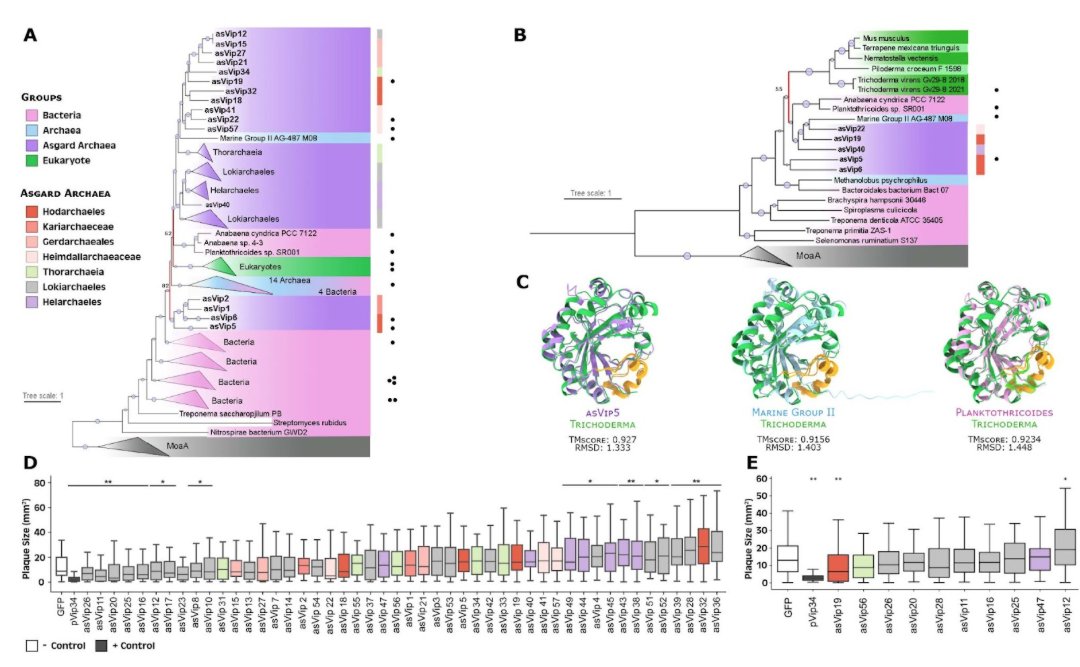Asgard archaea defense systems and their roles in the origin of immunity in eukaryotes
Immune systems are integral to survival against viral infection. Recently, dozens of new anti-viral systems have been characterized in bacteria1. Some of these systems are present in eukaryotes and appear to have originated in prokaryotes. However, little is known about these defense mechanisms in archaea. Here, we identified 2,610 complete defense systems in archaea related to eukaryotes, the Asgardarchaeota2. These comprise 89 unique systems, including argonaute, NLR, mokosh, viperin, lassamu, and CBASS. Asgard viperin (asVip) and argonaute (asAgo) proteins are present at high frequencies compared to bacteria and have structural homology to eukaryotes. Phylogenetic analyses revealed asVips are ancestral eukaryotic proteins. Heterologous expression of asVips in bacteria, including the lineage closest to eukaryotes, Hodarchaeales, showed robust anti-phage activity. Eukaryotic-and bacterial-argonaute proteins appear to have originated in the Asgardarchaeota, and have ancient structural characteristics. AsAgos appear to have argonaute-PIWI domains which are key components of the RNA interference (RNAi) in eukaryotes. Characterization of hundreds of new defense systems in the Asgardarchaeota revealed these archaea played important roles in the innovation of viral protection in eukaryotes. Given their relationship to eukaryotes, these defense systems may have applications in biomedicine and biotechnology.
https://www.biorxiv.org/content/10.1101/2023.09.13.557551v1


